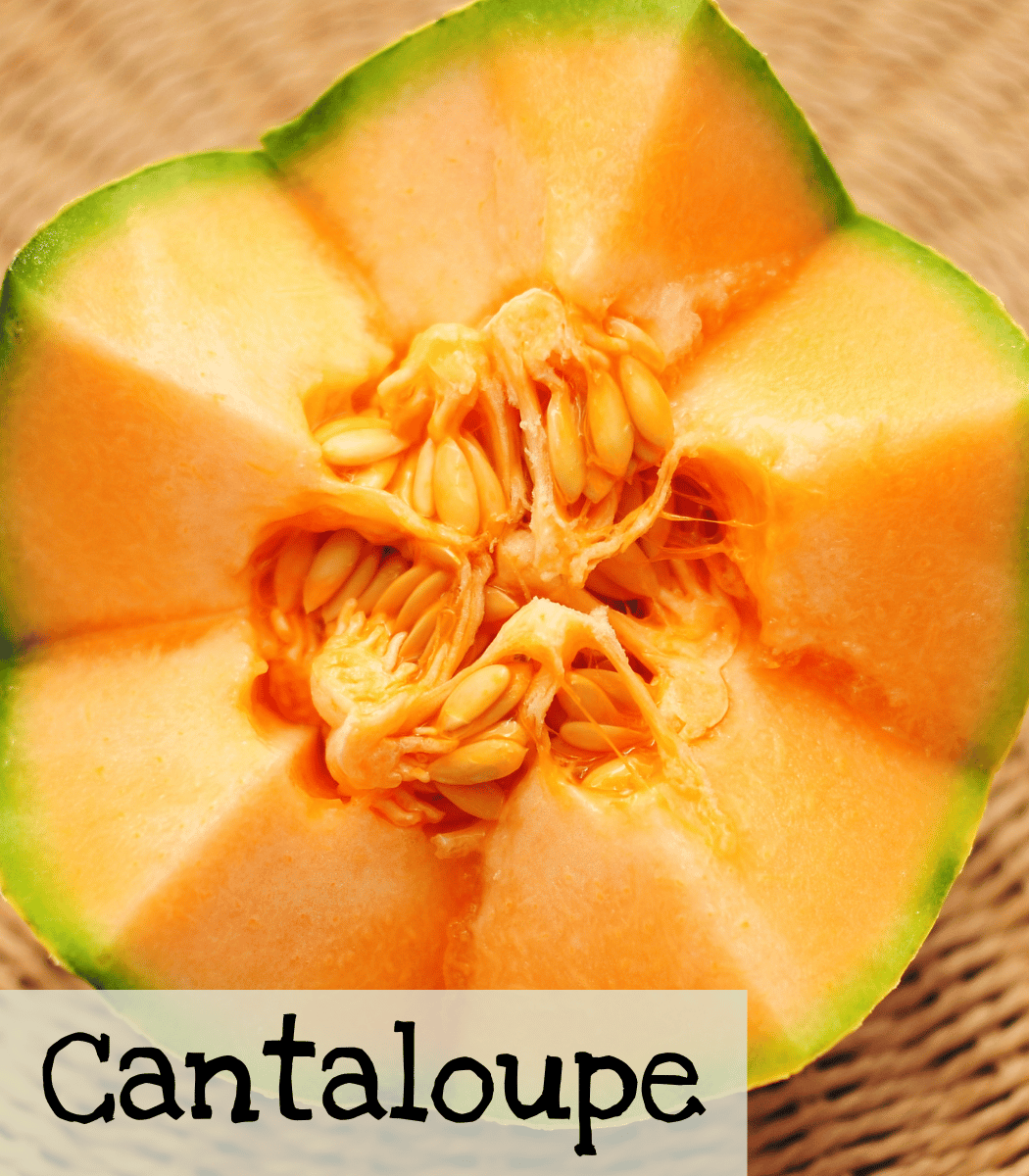
Cantaloupe
Like all melons, cantaloup is in the cucumber family. These sweet melons are a refreshing and healthy fruit.
|
Charentais; Hale’s Best Jumbo; Honey Rock; Petit Gris De Rennes |
|
Cucumis melo |
|
Easy |
|
Difficult |
|
5 years if properly cured, cleaned, and stored |
|
Annual |
|
5-12 Days |
|
None |
|
1/2 – 1 inch |
|
Vine |
|
Full sun |
|
70-90 days |
|
|
|
March, April, May, June |
|
Yes |

Growing Tips

When to Start
Spring: Direct sow after all danger of frost has passed. (Mar 20-Jun 20 GA: May 1 for Jefferson, GA)
Transplant: Start seedlings 4 weeks before the last frost date and transplant after ALL danger of frost has passed.
How to Grow
When planting cantaloupe, wait until the threat of frost has passed and the soil has warmed in spring. (May 1 for Jefferson, GA) Direct sowing is best. However, there are reasons to start indoors. One of which is if you have a shorter growing season. (Just keep the plant from becoming root bound.) Another is if you are using the melon as a trap crop. For more information on how to use and maintain trap crops, see Pest Management.
Plant in full sun and well-draining soil. Sow the seeds to a depth of ½ to 1 inch deep, and in groups of 2-3. Space about 2 feet apart with rows 5-6 feet apart. (For the Weeks NC Giant space 2-3 apart.) Harden off any transplants and plant after all danger of frost has passed.
Care
Melons are mostly made up of water. Water 1-2 inches per week, preferably through drip irrigation. Soaker hoses or drip irrigation will keep the leaves dry helping to prevent disease. Melons do hate wet feet, so check the soil moisture before watering. If it’s dry an inch down, it’s time to water. Mulching the plants helps maintain the soil moisture and will keep down weeds.
It is best to keep the fruit from direct contact with the soil. You can use mulch, cardboard, or cantaloupe cradles.
Melons face a variety of pests which can prove challenging. They are in the same family as cucumbers and they have the same pest problems as both squashes and cucumbers. See Pest Management for helpful tips.
Harvest
Be careful to not water as the melons start to reach maturity. Too much water at this stage will make the fruit not as flavorful. Cantaloupe should be ready for harvesting about a month after the fruit has set. A ripe cantaloupe will separate from easily the stem. If it doesn’t, leave it a little longer but check often.
Seed Saving

Isolation Distance
Separate varies of Cucumis melo by ½ mile or cage and hand-pollinate.
Instructions
Harvest for seeds when the melon is ripe for eating. Store the harvested cantaloupe intact for an additional 3 weeks before removing and cleaning the seeds.
Fermenting the seed/pulp mixture for 3 to 4 days before cleaning can help prevent passing disease and fungus from generation to generation, but is not required.
Scoop the seeds—together with the pulp that surrounds them—into a jar or bowl with a little water (about half as much water as seeds and pulp). Remove the seeds that float and pulp. Viable (good) good seeds will sink to the bottom. Pour the viable seeds into a colander.
Rub them underwater between your fingers gently but thoroughly while cleaning them, to remove the naturally occurring gel from their coats. Dry the cleaned seeds on a shiny surface (they will stick to paper) until they are brittle.
Features
- Charentais: A French heirloom. Fruit is 2-3 pounds with a light grey-green skin and sweet orange flesh.
- Hale’s Best Jumbo: Early maturing, salmon-toned flesh. Thrives in hot weather. Heirloom.
- Honey Rock: High-yielding sweet and juicy fruit. Salmon-toned flesh. Vines are wilt-resistant. Produces 5-7 melons per plant.
- Petit Gris De Rennes: A French Heirloom. The 2 pound fruit has orange flesh and is sweet and fragrent.
You May Also Like:
Companion Planting: One of the easiest ways to help control pests!
Trap cropping: How to keep pests out of your main crop.
